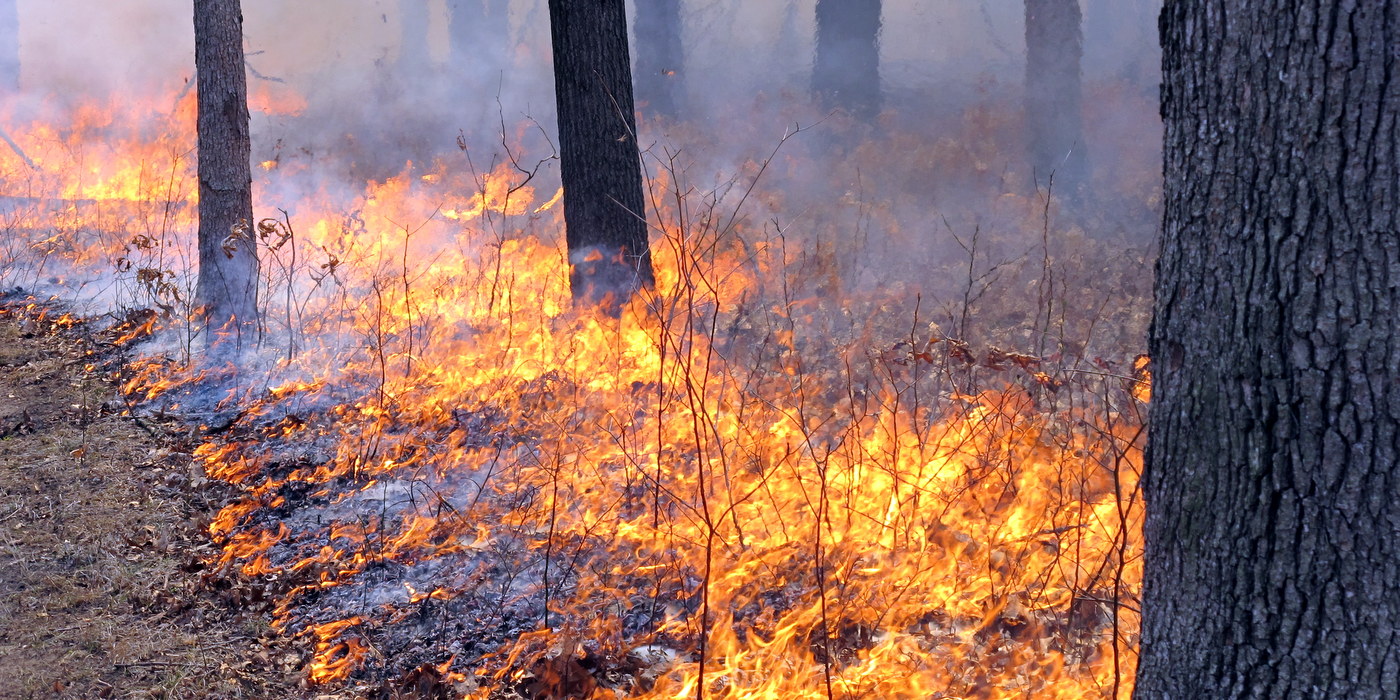
Prescribed Fire
Wellness and Prescriptions for Biodiversity
For people, achieving wellness is pretty simple; it comes down to maintaining a balance. Appropriate nutrients, water, exercise, doctors’ visits and sometimes prescriptions all help us stay well.
The same is true of prairie, dune, and savanna landscapes. They need to maintain a balance, best accomplished by appropriate soil nutrients, light, and moisture for growth. Sometimes invasive plants take up soil nutrients, sunlight and moisture and cause a disruption. If for this or other reasons an ecosystem has become imbalanced, a wellness plan and prescription burn may be in order.
Metroparks natural resource managers determine if fire is the best tool to restore a natural area’s ecological quality by studying a site and then developing a comprehensive plan. Usually, burns occur at prairie and savanna sites every 2-5 years and/or oak woodland sites every 3-6 years. By including prescribed fire to care for oak savannas, woodlands, and prairies, Metroparks and its partners can ensure that the Oak Openings Region and its many rare and endangered species are preserved for the future. This globally rare region is home to one-third of Ohio’s endangered and threatened plants, more than any area of similar size in Ohio.
For thousands of years, the Oak Openings ecosystem of sand dunes, oak savannas, and wet and dry prairies was sustained through periodic fires. In the last two centuries, much of the region was transformed into a mosaic of farms and residential areas where fire became undesirable. Without sunny openings, fire-adapted prairie and savanna plants may not flower or be pollinated effectively. After a burn, the native plant growth is stimulated by fire-blackened soils that are warmed by the sun. Warm soils produce a longer growing season with greater soil microbe activity and more soil nutrients.
Since 1988, Metroparks has safely used prescribed burns to renew oak savannas and prairies, and to control invasive, non-native shrubs such as autumn olive and buckthorn. They are timed for early spring and late fall to minimize negative effects on the wildlife or habitat. By keeping weedy species in check, habitats no longer are “choked” by dense shade or covered by too much leaf litter. Wherever the natural landscape has been restored, such as Oak Openings Preserve Metropark, the careful use of prescribed fire has significantly improved natural biodiversity, benefiting the native wildlife and rare plants.
How prescribed fires benefit plants and animals
Research on 34 years of savanna restoration in Oak Openings Preserve
The name, “Oak Openings” came from the idea that the early settlers could see openings between the oak trees in the wide expanses of prairie in the region. Renowned ornithologist Harold Mayfield said, “You can’t have the Oak Openings without the openings.” Through time, prescribed burns have effectively worked to help bring back the “open” character of the Oak Openings.
Disturbance, such as fire, is imperative for habitats within the rare Oak Openings Region to thrive. In areas once depended on wildfires, the Metroparks Natural Resources Dept. uses carefully managed prescribed fires. In these “incredibly special” areas, “you can’t just leave it alone,” explains LaRae Sprow, a natural resources supervisor.
This video made possible by the Carson Family Fund at the Greater Toledo Community Foundation. Sponsored by the Metroparks Toledo Foundation.
Disturbance, such as fire, is imperative for habitats within the rare Oak Openings Region to thrive. In areas once depended on wildfires, the Metroparks Natural Resources Dept. uses carefully managed prescribed fires. In these “incredibly special” areas, “you can’t just leave it alone,” explains LaRae Sprow, a natural resources supervisor.
This video made possible by the Carson Family Fund at the Greater Toledo Community Foundation. Sponsored by the Metroparks Toledo Foundation.